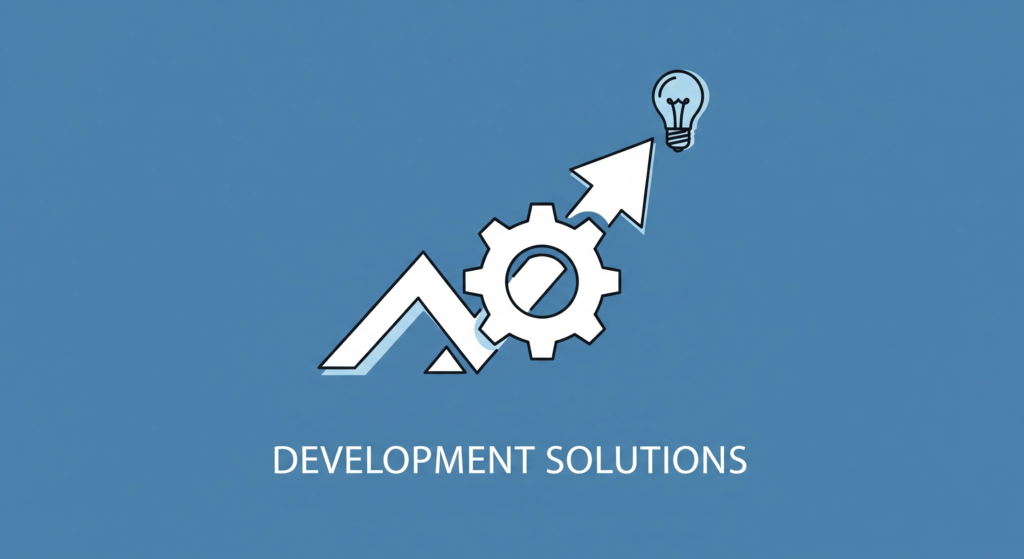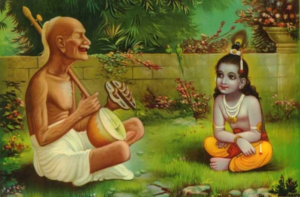Here are the comprehensive Development Solutions, based primarily on the NCERT textbook for the CBSE Class 10 Economics syllabus, Chapter 1. These solutions cover all important end-of-chapter questions, providing clear, step-by-step answers aligned with the concepts explained in the textbook. Designed to help you understand and apply each topic effectively, the solutions include simplified explanations, accurate examples, and well-structured answers based on real-world data. Whether you are revising for exams or practicing for a deeper understanding, this solution guide is your quick and reliable companion.

EXCERCISES
1. Development of a country can generally be determined by
(i) its per capita income
(ii) its average literacy level
(iii) health status of its people
(iv) all the above
Answer: (iv) all the above.
2. Which of the following neighbouring countries has better performance in terms of human development than India?
(i) Bangladesh
(ii) Sri Lanka
(iii) Nepal
(iv) Pakistan
Answer: (ii) Sri Lanka.
3. Assume there are four families in a country… what is the income of the fourth family?
(i) Rs 7500
(ii) Rs 3000
(iii) Rs 2000
(iv) Rs 6000
Answer: (iv) Rs 6000.
Total income of the four families = Average income × Number of families = Rs 5000 × 4 = Rs 20,000.
Sum of the income of the three known families = Rs 4000 + Rs 7000 + Rs 3000 = Rs 14,000.
Income of the fourth family = Total income – Sum of the three families = Rs 20,000 – Rs 14,000 = Rs 6000.
4. What is the main criterion used by the World Bank in classifying different countries? What are the limitations of this criterion, if any?
Answer: The main criterion used by the World Bank is per capita income. The major limitation is that it hides disparities within a country. It doesn’t show how the income is distributed among the people, meaning a country with a high average income could still have a small number of very rich people and a large number of very poor people.
5. In what respects is the criterion used by the UNDP for measuring development different from the one used by the World Bank?
Answer: The World Bank uses only per capita income to classify countries. The UNDP, in its Human Development Report, uses a broader set of criteria, including per capita income, educational levels, and health status of the people.
6. Why do we use averages? Are there any limitations to their use? Illustrate with your own examples related to development.
Answer: Averages are used to compare different entities (like countries or states) with different populations, providing a single, simplified figure for comparison. The main limitation is that they hide disparities. For example, while the average height of students in a class might be 5 feet, this number doesn’t reveal that some students are much taller or shorter than others. Similarly, in development, per capita income doesn’t show the distribution of wealth. One country might have a high average income due to a small number of extremely wealthy individuals, while the majority of the population lives in poverty.
7. Kerala, with lower per capita income has a better human development ranking than Haryana… Do you agree? Discuss.
Answer: Yes, I agree. The text shows that despite having a lower per capita income than Haryana, Kerala has a much better human development ranking due to its superior performance in other key indicators. For example, Kerala has a significantly lower infant mortality rate and a higher literacy rate. This demonstrates that per capita income alone is an insufficient measure of development. Other factors like health and education are essential for the well-being of the population and are crucial for a holistic understanding of development.
8. Find out the present sources of energy that are used by the people in India. What could be the other possibilities fifty years from now?
Answer: The primary sources of energy currently used by people in India are fossil fuels such as coal, petroleum (oil), and natural gas. Other sources include electricity, as well as renewable sources like hydroelectric, solar, wind, and biomass. Fifty years from now, there is a strong possibility that India will increasingly shift towards renewable and clean energy sources to address sustainability concerns. This could involve an expanded use of solar and wind power, advancements in nuclear energy, the adoption of new technologies like hydrogen fuel, and greater reliance on electric vehicles.
9. Why is the issue of sustainability important for development?
Answer: The issue of sustainability is important because current patterns of development can deplete resources and harm the environment, jeopardizing the ability of future generations to meet their own needs. Development is only sustainable if it can be maintained over time without causing irreversible environmental damage or exhausting natural resources. The text highlights how non-renewable resources like crude oil are finite, and renewable resources like groundwater can be overused.
10. “The Earth has enough resources to meet the needs of all but not enough to satisfy the greed of even one person”. How is this statement relevant to the discussion of development? Discuss.
Answer: This statement is highly relevant to the discussion of development as it highlights the contrast between basic needs and excessive consumption. The provided text discusses how development has led to the overuse of resources like groundwater and the depletion of non-renewable resources like crude oil. This is a direct consequence of “greed,” or the overconsumption of resources by some, which threatens the availability of these resources for others and for future generations. True development should focus on the equitable distribution of resources to meet everyone’s needs in a sustainable manner, rather than allowing a few to exhaust them through their excessive desires.
11. List a few examples of environmental degradation that you may have observed around you.
Answer:
- Air pollution from vehicles and industries.
- Water contamination from improper disposal of waste.
- Deforestation for construction or agriculture.
- Noise pollution in urban areas.
- Waste accumulation in public places.
12. For each of the items given in Table 1.6, find out which country is at the top and which is at the bottom.
TABLE 1.6 SOME DATA REGARDING INDIA AND ITS NEIGHBOURS FOR 2022
| Country | Gross National Income (GNI) per capita (2017 PPP $) | Life Expectancy at birth | Mean Years of Schooling of People aged 25 and above | HDI Rank in the world (2021-22) |
| Sri Lanka | 11,899 | 76.6 | 11.2 | 78 |
| India | 6,951 | 67.7 | 6.5 | 134 |
| Myanmar | 4,038 | 67.3 | 6.5 | 144 |
| Pakistan | 5,374 | 66.4 | 4.4 | 164 |
| Nepal | 4,026 | 70.5 | 4.5 | 146 |
| Bangladesh | 6,511 | 73.7 | 7.4 | 129 |
Answer:
Gross National Income (GNI) per capita:
- Top: Sri Lanka ($11,899)
- Bottom: Nepal ($4,026)
Life Expectancy at birth:
- Top: Sri Lanka (76.6 years)
- Bottom: Pakistan (66.4 years)
Mean Years of Schooling:
- Top: Sri Lanka (11.2 years)
- Bottom: Pakistan (4.4 years)
HDI Rank in the world:
- Top: Pakistan (Rank 164)
- Bottom: Sri Lanka (Rank 78)
13. The following table shows the proportion of adults (aged 15-49 years) whose BMI is below normal (BMI <18.5 kg/m2) in India. It is based on a survey of various states for the year 2019-21. Look at the table and answer the following questions.
| State | Male (%) | Female (%) |
| Kerala | 8.5 | 10 |
| Karnataka | 17 | 21 |
| Madhya Pradesh | 28 | 28 |
| All States | 20 | 23 |
(i) Compare the nutritional level of people in Kerala and Madhya Pradesh.
Answer: The nutritional level of people in Kerala is much better than in Madhya Pradesh. The proportion of undernourished adults (with a BMI below normal) is significantly lower in Kerala (8.5% of males and 10% of females) compared to Madhya Pradesh (28% of both males and females).
(ii) Can you guess why around one-fifth of people in the country are undernourished even though it is argued that there is enough food in the country? Describe in your own words.
Answer: This situation can be attributed to factors beyond just food production. Even if there is enough food in the country, many people may not be able to afford it due to poverty or lack of income. Furthermore, there might be issues with the distribution system, where food is not efficiently delivered to all parts of the country, especially in rural or remote areas. Lastly, a lack of education and awareness about proper nutrition can also lead to undernourishment, as people might not be consuming a balanced diet even if food is available.


